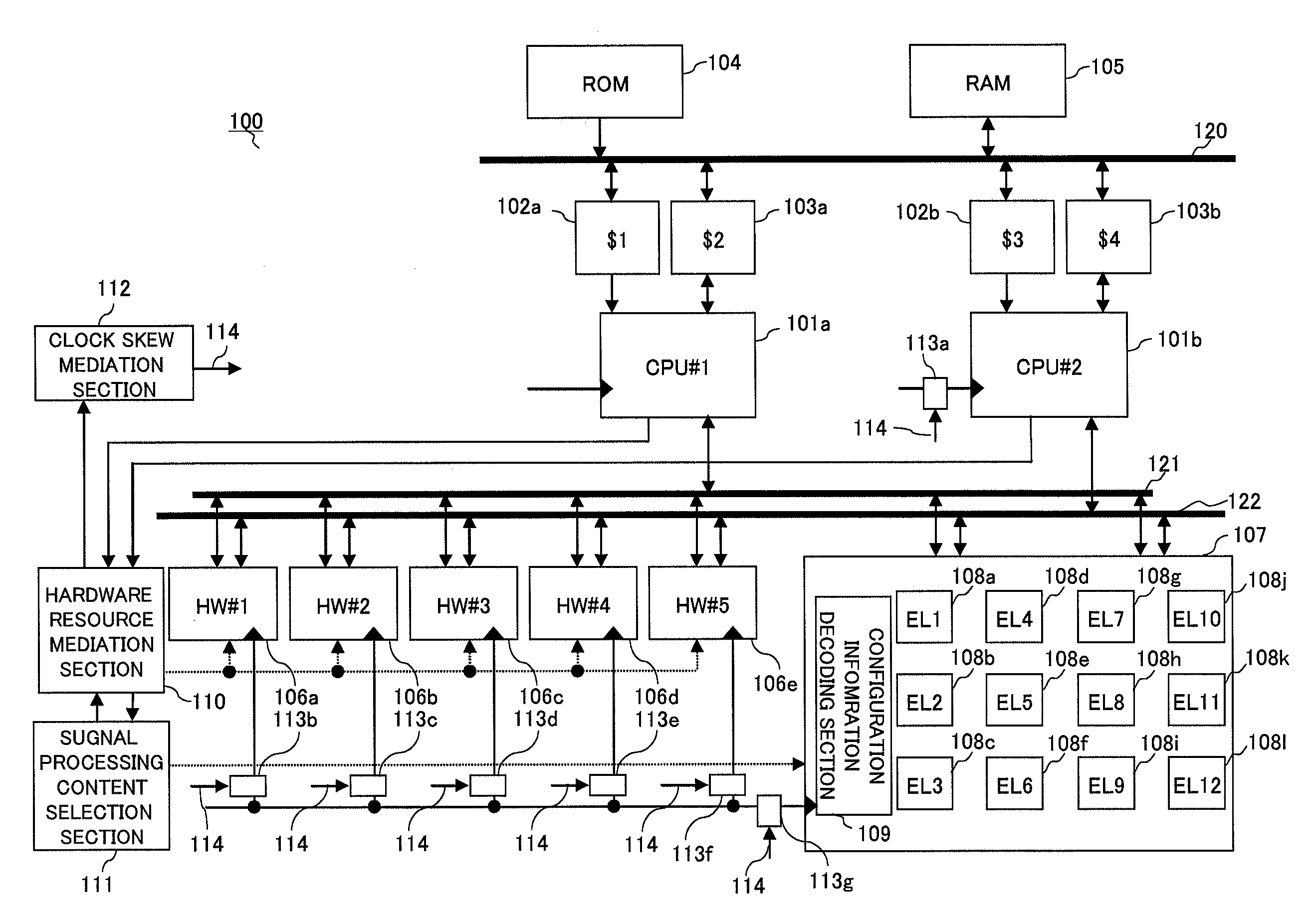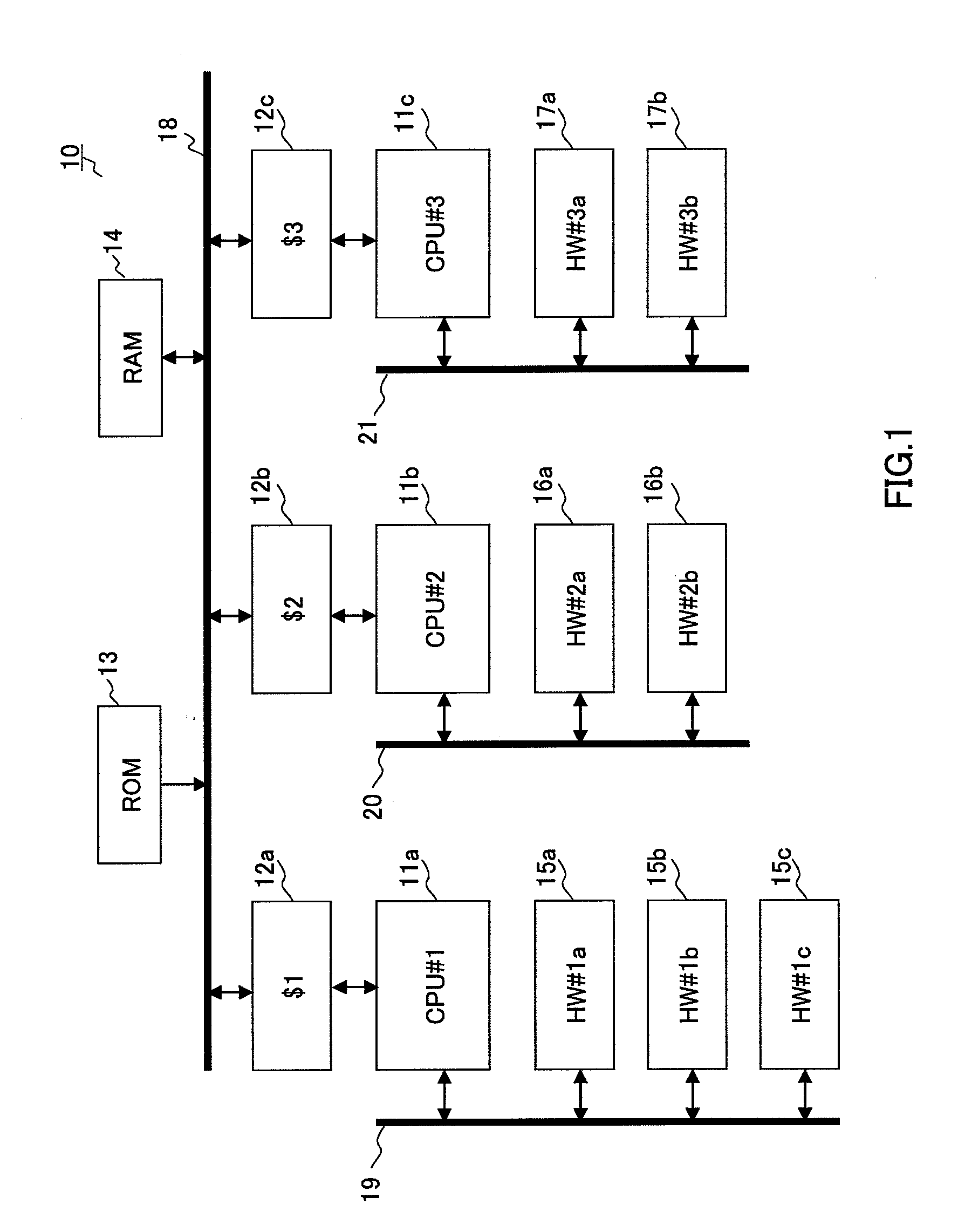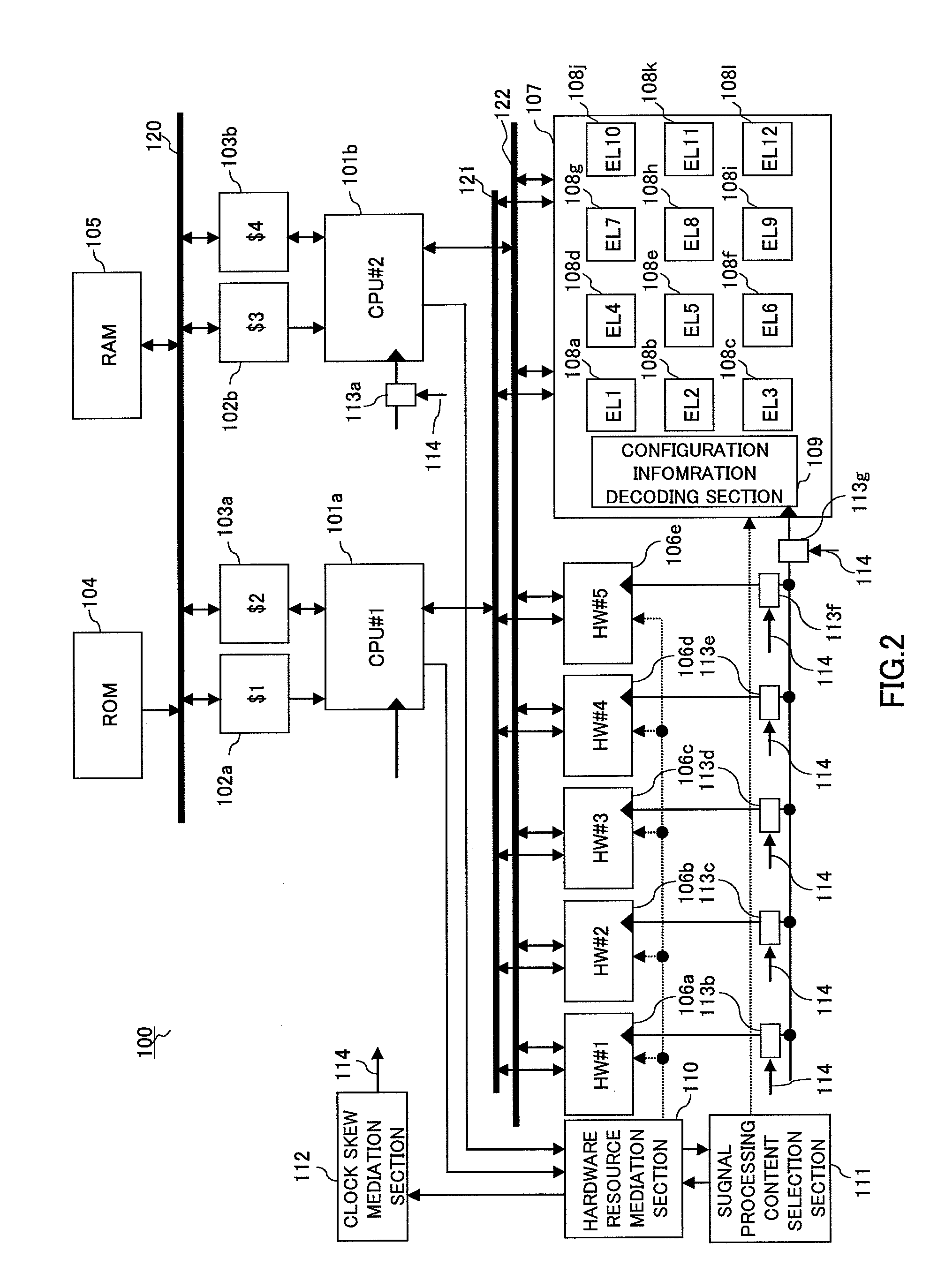Asymmetric multiprocessor
a multi-processor and asymmetric technology, applied in the field of asymmetric multi-processors, can solve the problems of small degree of freedom in the load distribution, increase in power consumption within the lsi so as to reduce the processing load of each processor (cpu), increase the degree of freedom of distributed processing, and reduce power consumption. large
- Summary
- Abstract
- Description
- Claims
- Application Information
AI Technical Summary
Benefits of technology
Problems solved by technology
Method used
Image
Examples
embodiment 1
[0026]FIG.2 is a block diagram showing the configuration of the asymmetric multiprocessor according to Embodiment 1 of the present invention. This embodiment is an example where the present invention is applied to an asymmetric multiprocessor provided with a first processor core (CPU core) or a second processor core (CPU core) as a multi-core processor provided with two or more processors.
[0027]In FIG.2, asymmetric multiprocessor 100 is provided with first CPU core 101a (CPU #1), second CPU core 101b (CPU #2), first command cache 102a ($1), first data cache 103a ($2), second command cache 102b ($3), second data cache 103b ($4), ROM 104, RAM 105, a plurality of hardware accelerator sections 106a through 106e (HW #1 through #5), dynamically reconfigurable signal processor section 107 which can be dynamically reconfigured, hardware resource mediation section 110 that mediates a request signal from CPU cores 101a and 101b that requests permission to use an arbitrary hardware accelerator...
embodiment 2
[0068]Embodiment 1 is configured so that the CPUs make slave connections with the hardware accelerators and share the hardware accelerators for the purpose of increasing the CPU processing speed. When the hardware resources requested by the CPUs conflict, the processing of one of the CPUs have to be stalled, and in this case, the processing performance decreases. To prevent this situation from occurring, a configuration is adopted where the CPUs also share dynamically reconfigurable signal processor section 107 which can be dynamically reconfigured and connected as a slave.
[0069]In Embodiment 2, an architecture that is capable of further increasing the degree of freedom by connecting a DSP as a slave of a CPU will be described.
[0070]FIG.5 is a block diagram showing the configuration of the asymmetric multiprocessor according to Embodiment 2 of the present invention.
[0071]Components that are the same as those in FIG. 2 will be assigned the same reference numerals for the description ...
embodiment 3
[0087]In Embodiment 2, hardware resource mediation section 310, clock skew mediation section 112, configuration signal selection section 311 and congested DSP core mediation section 312 are provided, and a detailed description has been given of a method whereby these components share a hardware accelerator, a DSP or a dynamically reconfigurable processor.
[0088]Each of the above-described components may also be used alone.
[0089]Embodiment 3 provides a technical element capable of executing signal processing with high efficiency when one or a plurality of DSP cores is provided in addition to the first CPU, the second CPU and a hardware accelerator. In Embodiment 3, the components can be used singly or in combination as parts of asymmetric multiprocessor 300 of Embodiment 2.
[0090]The hardware configuration of the asymmetric multiprocessor according to Embodiment 3 is the same as in FIG.5, and no description thereof is given.
[0091]Embodiment 3 can be divided into a “signal processing fu...
PUM
 Login to View More
Login to View More Abstract
Description
Claims
Application Information
 Login to View More
Login to View More - R&D
- Intellectual Property
- Life Sciences
- Materials
- Tech Scout
- Unparalleled Data Quality
- Higher Quality Content
- 60% Fewer Hallucinations
Browse by: Latest US Patents, China's latest patents, Technical Efficacy Thesaurus, Application Domain, Technology Topic, Popular Technical Reports.
© 2025 PatSnap. All rights reserved.Legal|Privacy policy|Modern Slavery Act Transparency Statement|Sitemap|About US| Contact US: help@patsnap.com



